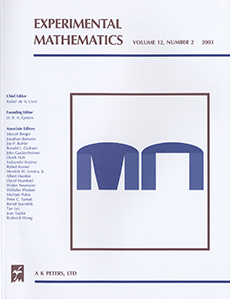Abstract
What's the best way to represent an isometry of hyperbolic 3-space $\bH^3$? Geometers traditionally worked in $\text{SL}(2,\bC)$, but for software development many now prefer the Minkowski space model of $\bH^3$ and the orthogonal group {O}(3,1). One powerful advantage is that ideas and computations in $S^3$ using matrices in {O}(4) carry over directly to $\bH^3$ and {O}(3, 1). Furthermore, {O}(3,1) handles orientation reversing isometries exactly as it handles orientation preserving ones. Unfortunately in computations one encounters a nagging dissimilarity between {O}(4) and {O}(3,1): while numerical errors in {O}(4) are negligible, numerical errors in {O}(3,1) tend to spiral out of control. The question we ask (and answer) in this article is, "Are exponentially compounded errors simply a fact of life in hyperbolic space, no matter what model we use? Or would they be less severe in $\text{SL}(2,\bC)$?" In other words, is numerical instability the Achilles' heel of {O}(3,1)?
Citation
William Floyd. Brian Weber. Jeffrey Weeks. "The Achilles' Heel of 0(3,1)?." Experiment. Math. 11 (1) 91 - 97, 2002.
Information




